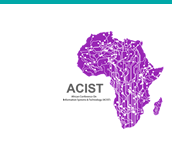Start Date
26-8-2021 12:00 AM
End Date
27-8-2021 12:00 AM
Description
Accessing different physical objects at any time from anywhere through wireless network heavily impacts the living style of societies worldwide nowadays. Thus, the Internet of Things has now become a hot emerging paradigm in computing environments. Issues like interoperability, software reusability, and platform independence of those physical objects are considered the main current challenges. This raises the need for appropriate software engineering approaches to develop effective and efficient IoT applications software. This paper studies the state of the art of design and development methodologies for IoT software. The aim is to study how proposed approaches have been solved issues of interoperability, reusability, and independence of the platform. A comparative study is presented for the different software engineering methods used for the Internet of Things. Finally, the key research gaps and open issues are highlighted as future directions.
Software Engineering Methods for the Internet of Things: A Comparative Review
Accessing different physical objects at any time from anywhere through wireless network heavily impacts the living style of societies worldwide nowadays. Thus, the Internet of Things has now become a hot emerging paradigm in computing environments. Issues like interoperability, software reusability, and platform independence of those physical objects are considered the main current challenges. This raises the need for appropriate software engineering approaches to develop effective and efficient IoT applications software. This paper studies the state of the art of design and development methodologies for IoT software. The aim is to study how proposed approaches have been solved issues of interoperability, reusability, and independence of the platform. A comparative study is presented for the different software engineering methods used for the Internet of Things. Finally, the key research gaps and open issues are highlighted as future directions.



